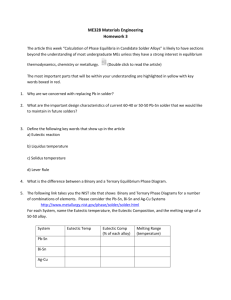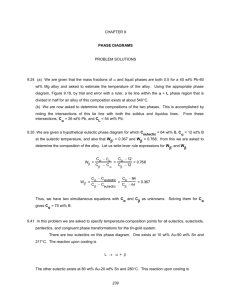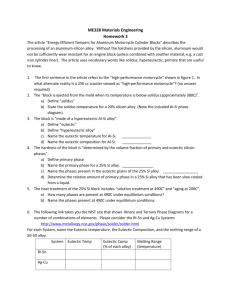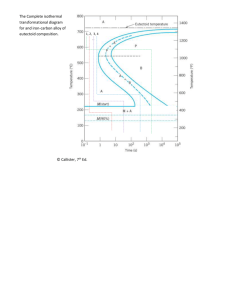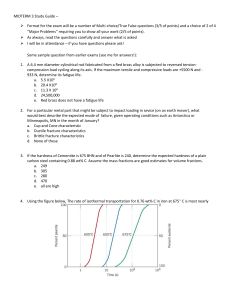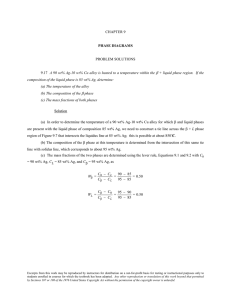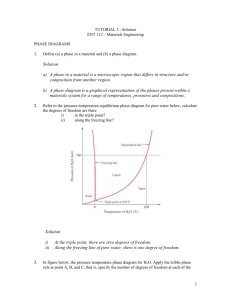Chap 9 Learn Obj
advertisement
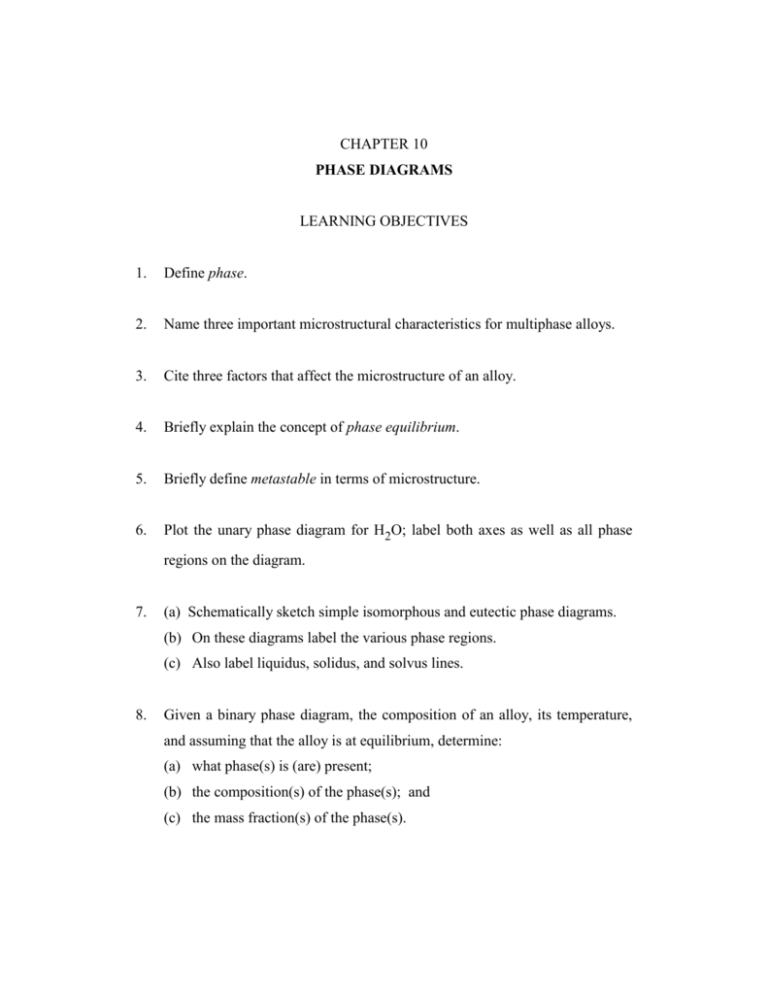
CHAPTER 10 PHASE DIAGRAMS LEARNING OBJECTIVES 1. Define phase. 2. Name three important microstructural characteristics for multiphase alloys. 3. Cite three factors that affect the microstructure of an alloy. 4. Briefly explain the concept of phase equilibrium. 5. Briefly define metastable in terms of microstructure. 6. Plot the unary phase diagram for H2O; label both axes as well as all phase regions on the diagram. 7. (a) Schematically sketch simple isomorphous and eutectic phase diagrams. (b) On these diagrams label the various phase regions. (c) Also label liquidus, solidus, and solvus lines. 8. Given a binary phase diagram, the composition of an alloy, its temperature, and assuming that the alloy is at equilibrium, determine: (a) what phase(s) is (are) present; (b) the composition(s) of the phase(s); and (c) the mass fraction(s) of the phase(s). 9. Given mass fractions and densities for both phases of a two-phase alloy, determine the phase volume fractions. 10. Using an isomorphous phase diagram, explain the phenomenon of coring for the nonequilbrium solidification of an alloy that belongs to this isomorphous system. 11. Given a binary phase diagram, locate the temperatures and compositions of all eutectic reactions, and then write the reactions for either heating or cooling. 12. Given a binary eutectic phase diagram, for an alloy of specified composition the microstructure of which microstructure consists of both primary and eutectic microconstituents, do the following: (a) compute the mass fractions of both microconstituents; and (b) sketch and label a schematic drawing of the microstructure. 13. Define microconstituent, and then cite two examples. 14. Given a binary phase diagram, determine the solubility limit of one of the elements in one phase at some given temperature. 15. Explain the following terms: (a) terminal solid solution, (b) intermediate solid solution, and (c) intermetallic compound. 16. For some given binary phase diagram, do the following: (a) locate the temperatures and compositions of all eutectoid, peritectic, and congruent phase transformations; and (b) write reactions for all these transformations for either heating or cooling. 17. Write the Gibbs phase rule in its most general form, and explain each term in the phase rule equation. 18. Apply Gibbs phase rule in single- and two-phase regions, as well as on isotherm lines for binary phase diagrams. 19. Name the crystal structures for both ferrite (-iron) and austenite (-iron). 20. Give the composition (in weight percent carbon) of iron carbide, Fe3C, and also the maximum solubility of carbon in both -ferrite and austenite phases. 21. Specify the temperature and composition at which the eutectoid reaction occurs, and write this eutectoid reaction for either heating or cooling. 22. Cite the three types of ferrous alloys on the basis of carbon content, and the composition range for each. 23. Briefly describe the pearlite structure, and then calculate the relative amounts of the two phases in this structure. 24. Given the composition of an iron-carbon alloy containing between 0.022 wt% C and 2.11 wt% C, be able to (a) determine whether it is a hypoeutectoid or hypereutectoid alloy; (b) specify the proeutectoid phase; (c) compute the mass fractions of the proeutectoid phase and pearlite; and (d) make a schematic diagram of the microstructure. 25. Given the composition of an Fe-C-M alloy (where M represents a metallic element other than iron--e.g., Cr, Ni, Mo, etc.), and a plot of the eutectoid composition versus the concentration of element M, be able to determine (a) the proeutectoid phase, and (b) the approximate mass fractions of proeutectoid and pearlite microconstituents.
